If you've been curious about osteoporosis screening and how it can benefit your bone health, you're in the right place! Understanding the importance of early detection and prevention is crucial, especially as we age. In this article, we'll walk you through the essential steps for screening, what to expect during your visit, and how to interpret your results. So, grab a cup of tea and read on to empower yourself with knowledge about osteoporosis screening!
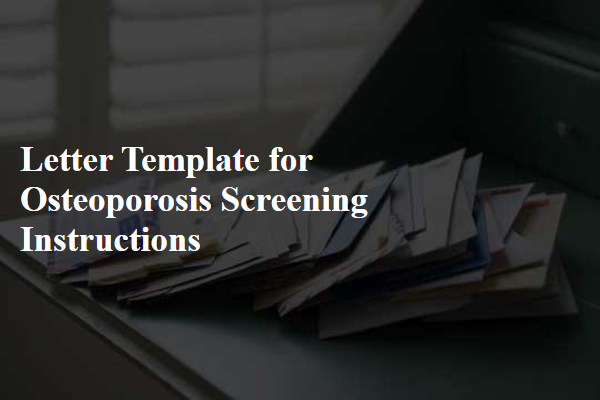
Screening Purpose and Benefits
Osteoporosis screening serves to detect low bone density, a significant condition affecting millions globally, especially individuals over 50 years of age. Early identification through dual-energy X-ray absorptiometry (DXA) scans can prevent fractures, which occur in over 50% of individuals with osteoporosis. The screening allows for timely intervention options, including medications and lifestyle adjustments, enhancing quality of life and reducing healthcare costs associated with osteoporosis-related injuries. Individuals participating in screenings typically receive results within a week, guiding healthcare professionals in creating personalized prevention strategies. Regular screening is crucial, with recommendations suggesting evaluations every two years for at-risk populations, including postmenopausal women and those with a family history of fractures. Taking proactive steps aids in sustaining bone health and promoting longevity.
Eligibility Criteria
Osteoporosis screening eligibility criteria include individuals aged 65 and older, as recommended by the National Osteoporosis Foundation. Women under 65 with risk factors such as family history of fractures, body weight under 127 pounds, or chronic steroid use should also be screened. Men aged 70 and older are encouraged to undergo screening, along with younger men with risk factors such as low testosterone or previous fractures. The recommended screening method is a Dual-Energy X-ray Absorptiometry (DEXA) scan, which measures bone mineral density to assess osteoporosis risk. Each healthcare provider may consider additional personal and medical history when determining eligibility, ensuring comprehensive and tailored assessments for osteoporosis.
Preparation Instructions
Osteoporosis screening requires careful preparation to ensure accurate results and a smooth process. Patients must consult with their healthcare provider about any medications that might interfere with test results, especially calcium and vitamin D supplements. Arriving at the designated facility, such as a designated radiology center, fasting for at least two hours prior to screening is highly recommended. It is essential to wear loose-fitting clothing without metal embellishments (zippers, buttons) to facilitate the imaging process. There may be a form of dual-energy X-ray absorptiometry (DEXA) screening scheduled, which accurately measures bone density in areas like the lumbar spine and hip. Patients with a history of fractures or other conditions should bring pertinent medical records to assist healthcare professionals in assessing bone health comprehensively.
Screening Procedure Overview
Osteoporosis screening involves a specialized test called Dual-Energy X-ray Absorptiometry (DEXA) which measures bone density. This procedure typically takes place in a medical facility equipped with advanced imaging technology. Patients lie on a padded table while a low-dose X-ray scanner passes over specific body areas, usually the lower spine or hips. The examination duration is approximately 10 to 30 minutes, depending on the number of regions assessed. The results provide crucial information about bone health, determining whether a person is at risk for fractures due to weak bones, especially in individuals over 65 years or those with risk factors like prolonged steroid use or family history of osteoporosis. Regular screenings, recommended every 1 to 2 years for at-risk populations, play a vital role in early detection and management of this condition.
Contact Information for Questions
Osteoporosis screening is crucial for early detection and prevention of bone density loss. Patients over the age of 65, or those at increased risk, should consider screening using a dual-energy X-ray absorptiometry (DEXA) scan, which measures bone mineral density. The scan typically takes place in a medical facility equipped with advanced imaging technology. Preparation may include avoiding calcium supplements for a day prior to the test to ensure accurate results. Post-screening, individuals are encouraged to discuss outcomes with their healthcare provider, who can provide personalized advice and treatment options if necessary. For any questions regarding screening locations or the process, patients should contact the dedicated osteoporosis care line at (555) 123-4567, staffed by knowledgeable professionals ready to assist with pertinent inquiries, including insurance coverage and appointment scheduling.

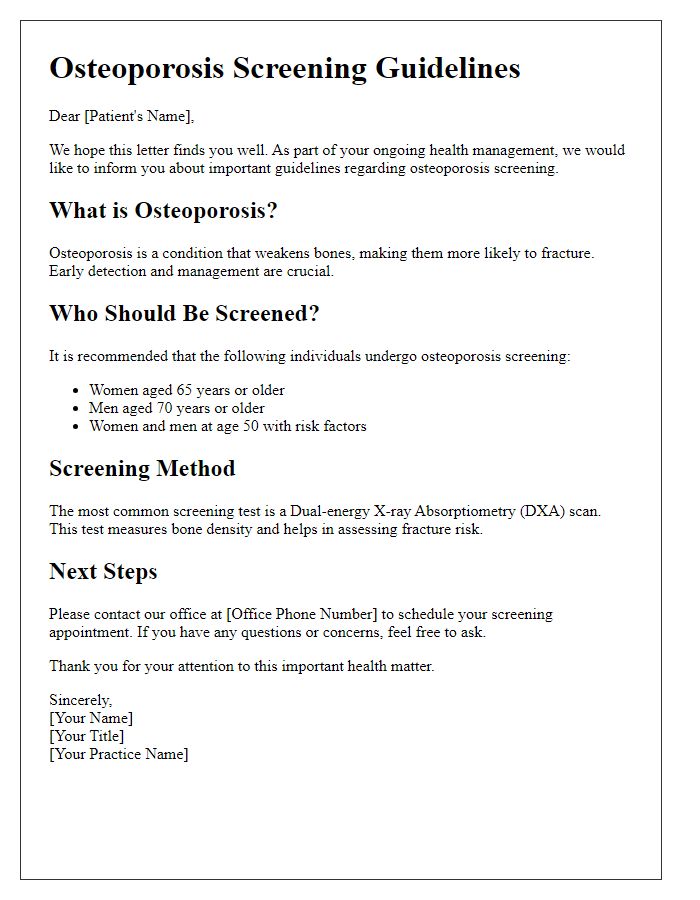
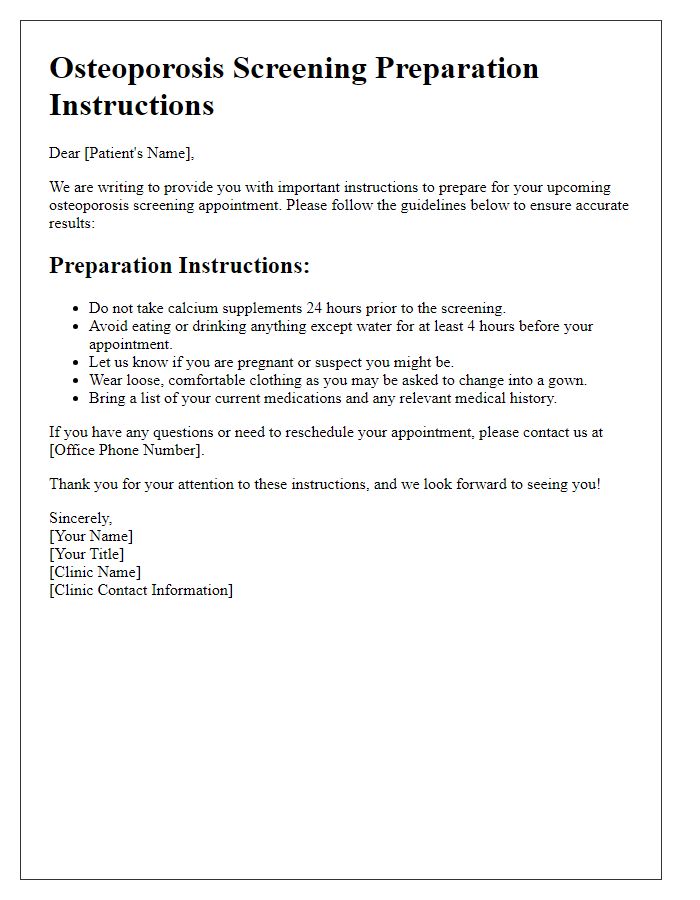
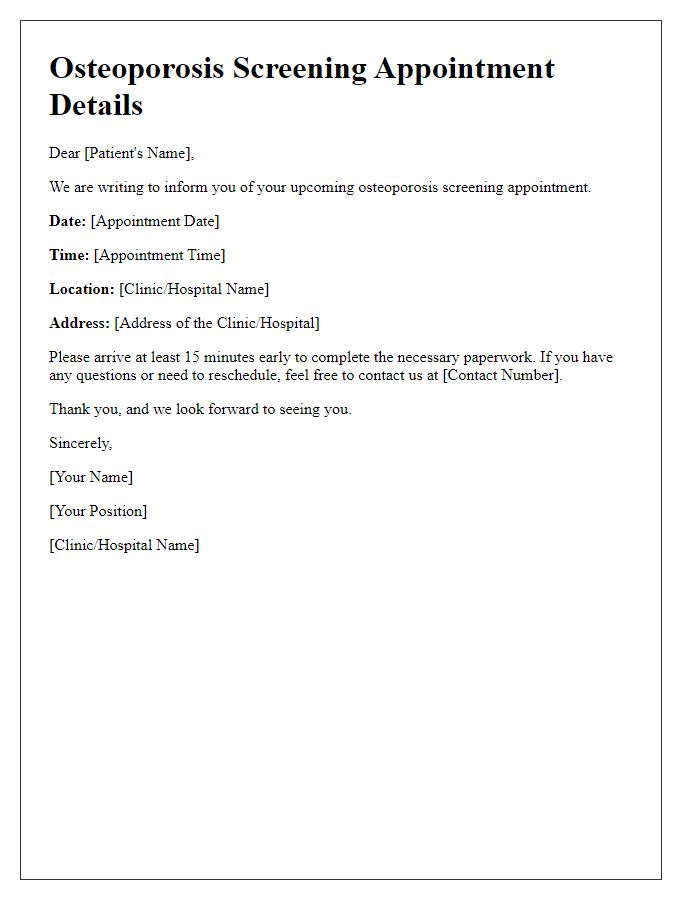
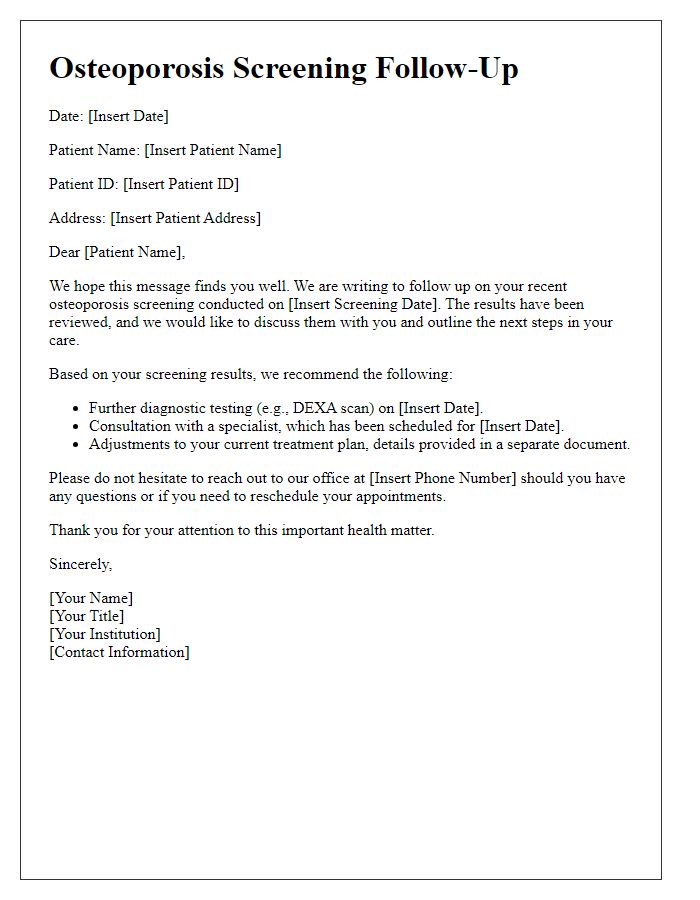
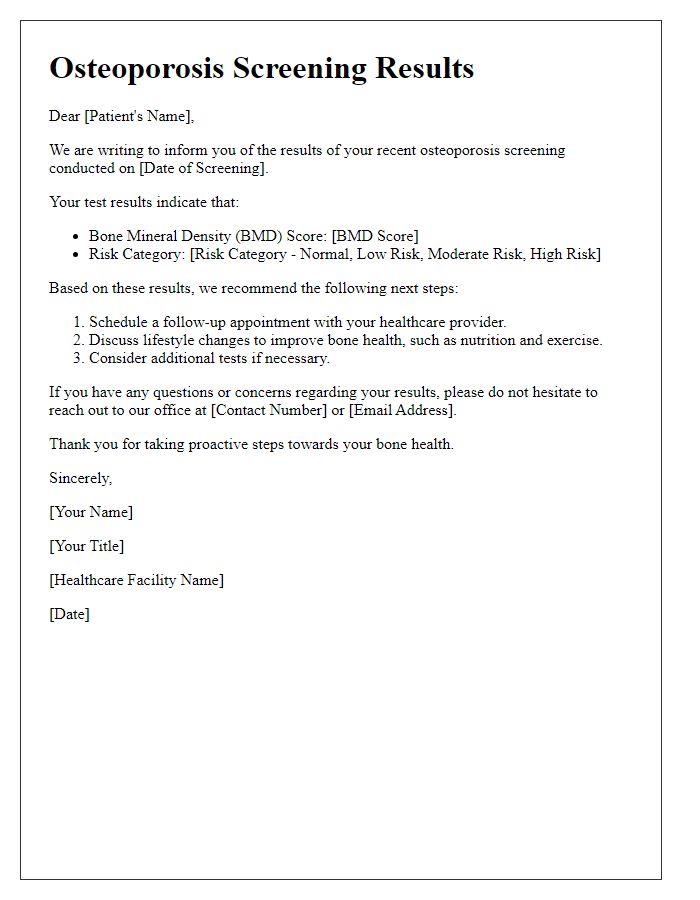
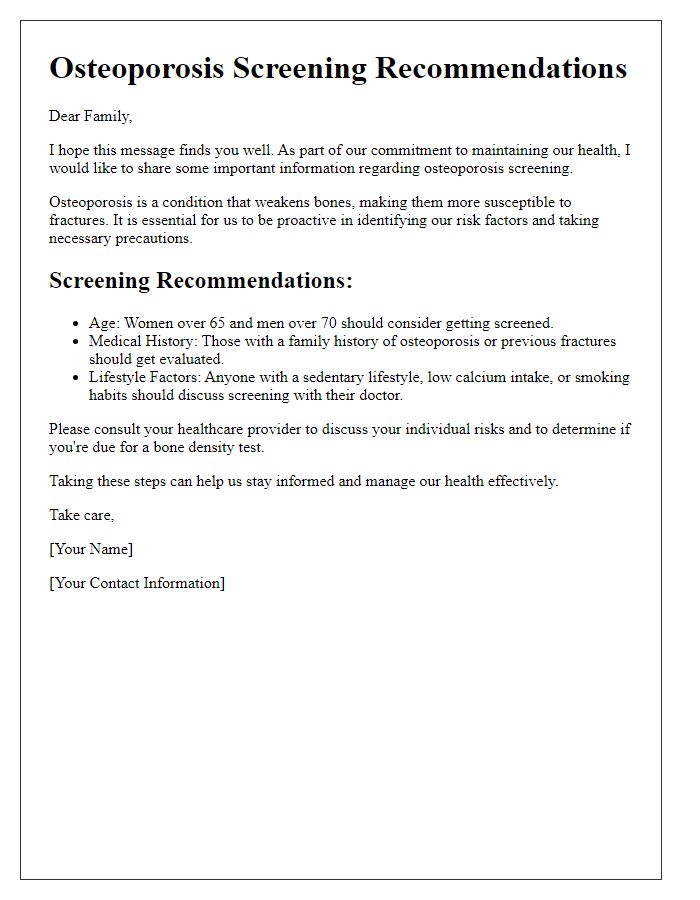
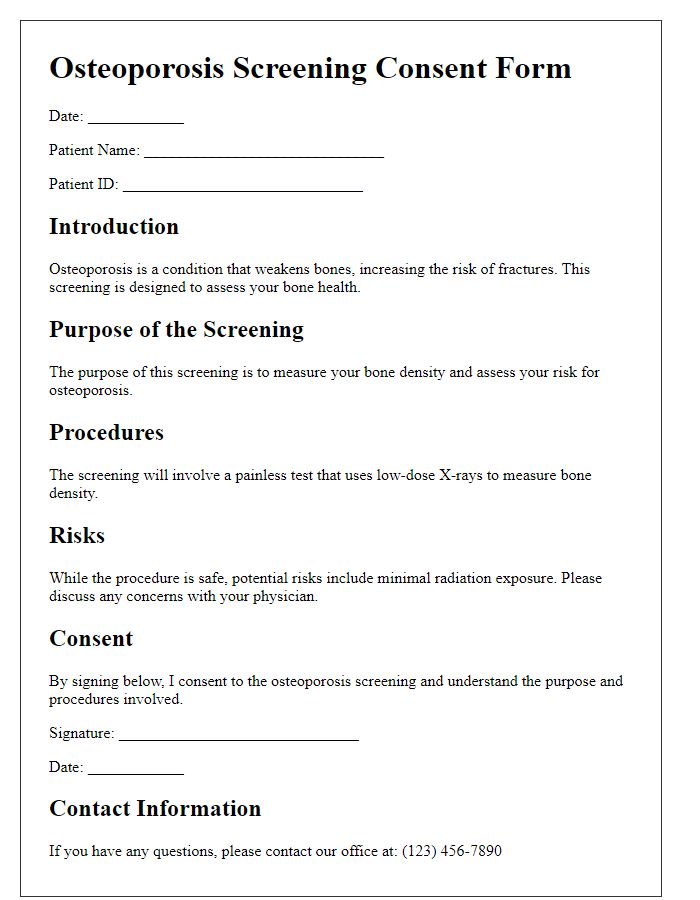
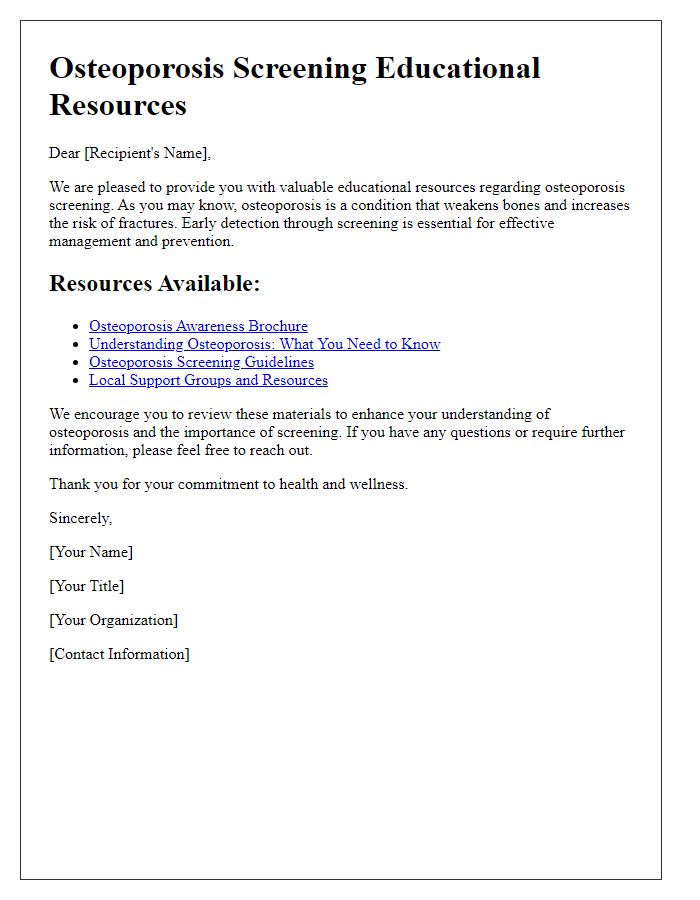
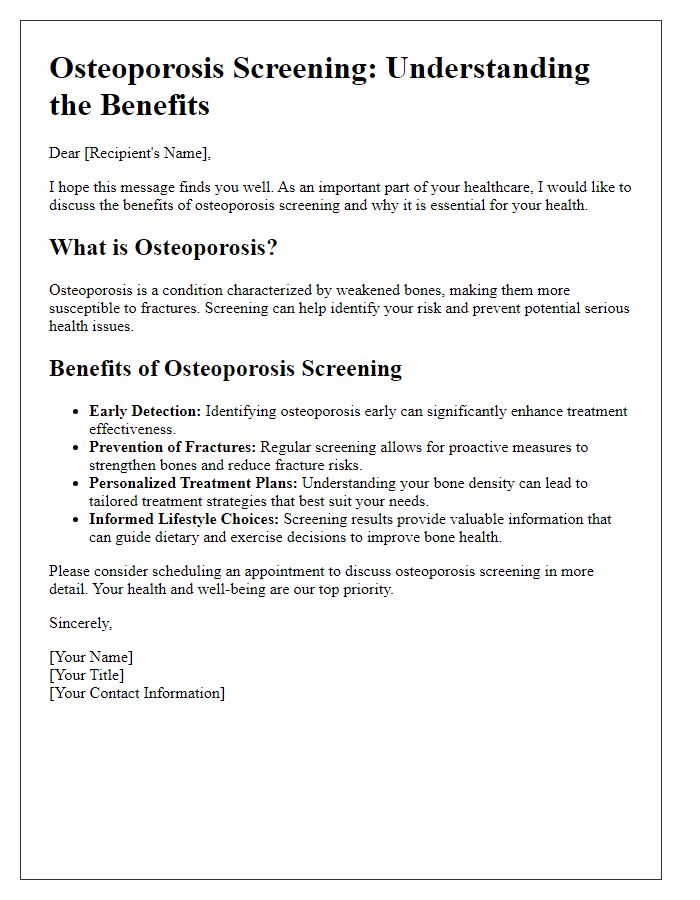
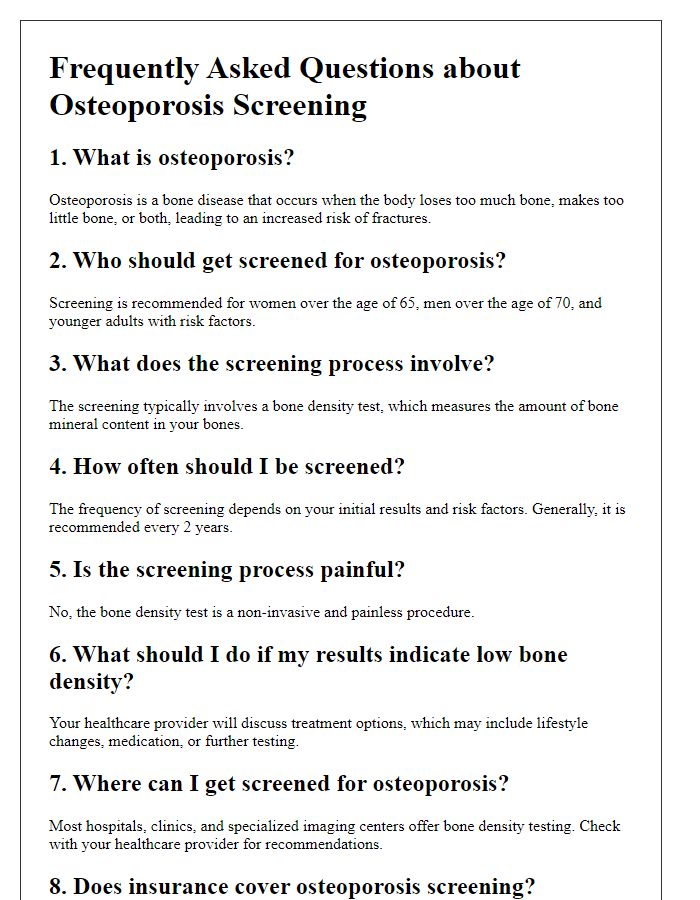



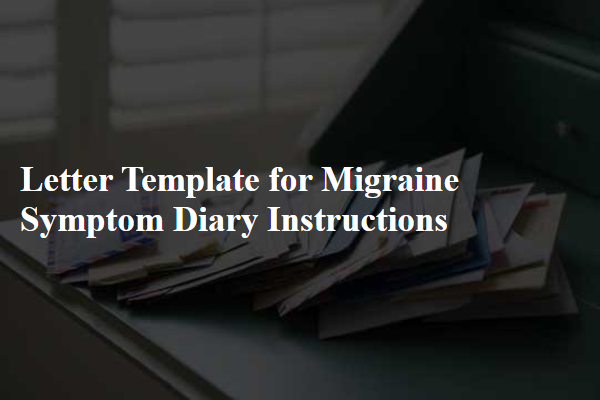
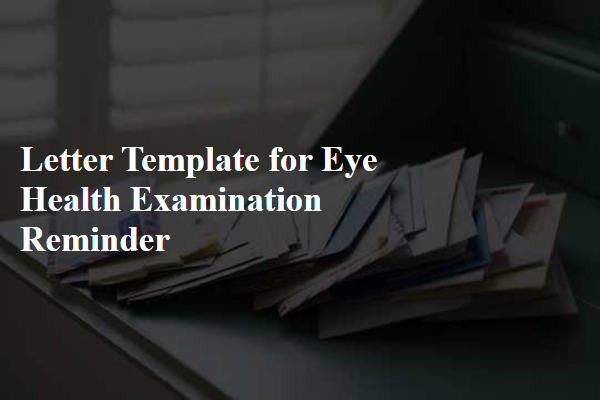
Comments